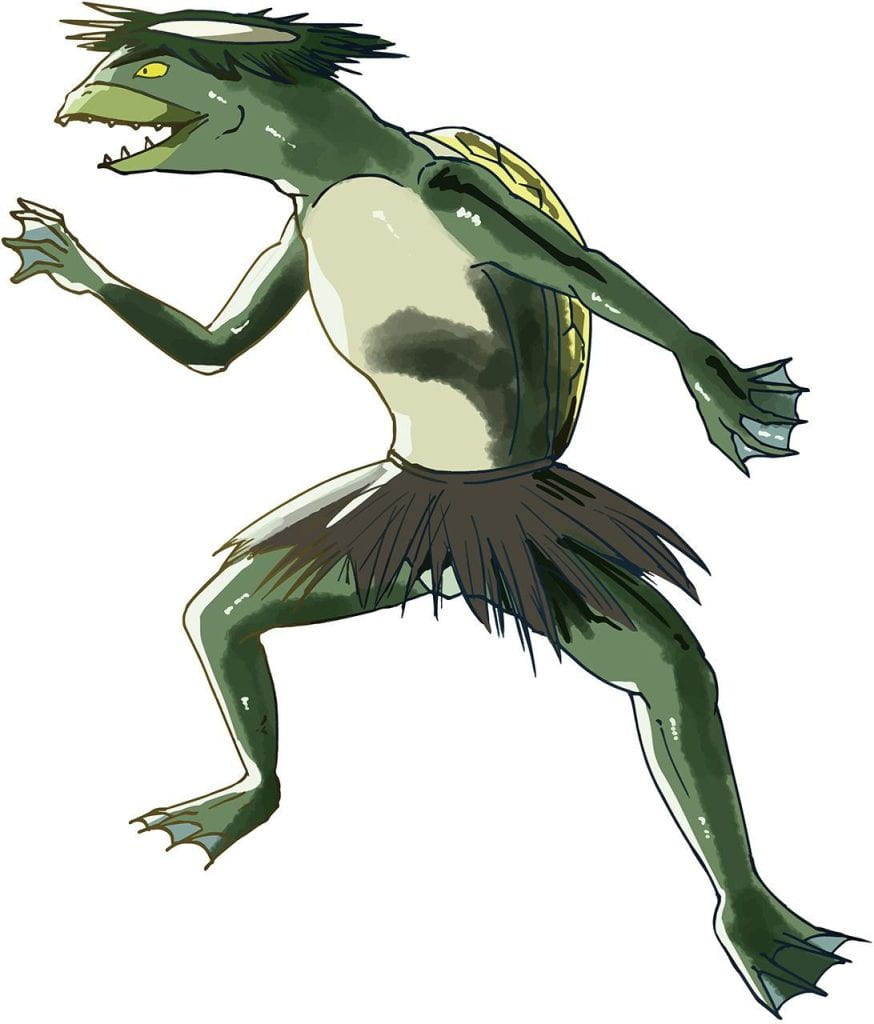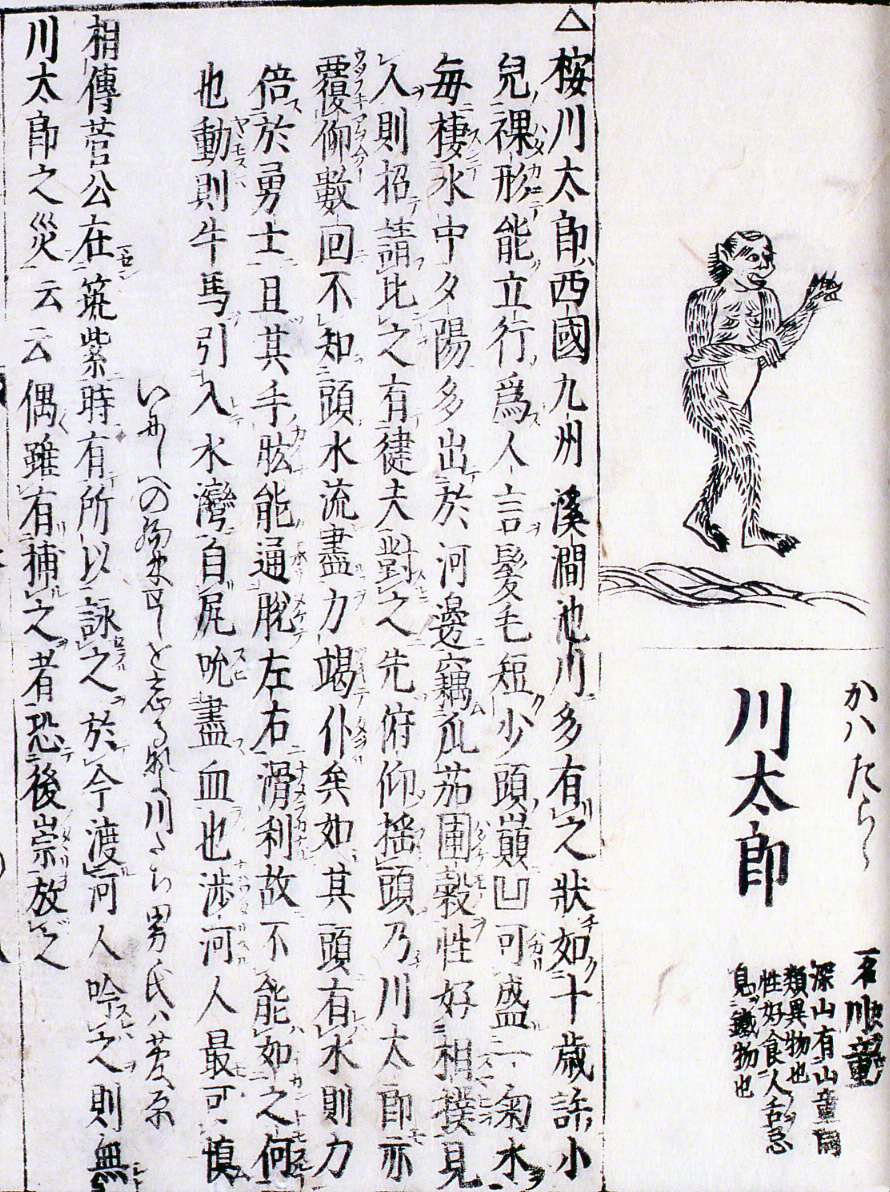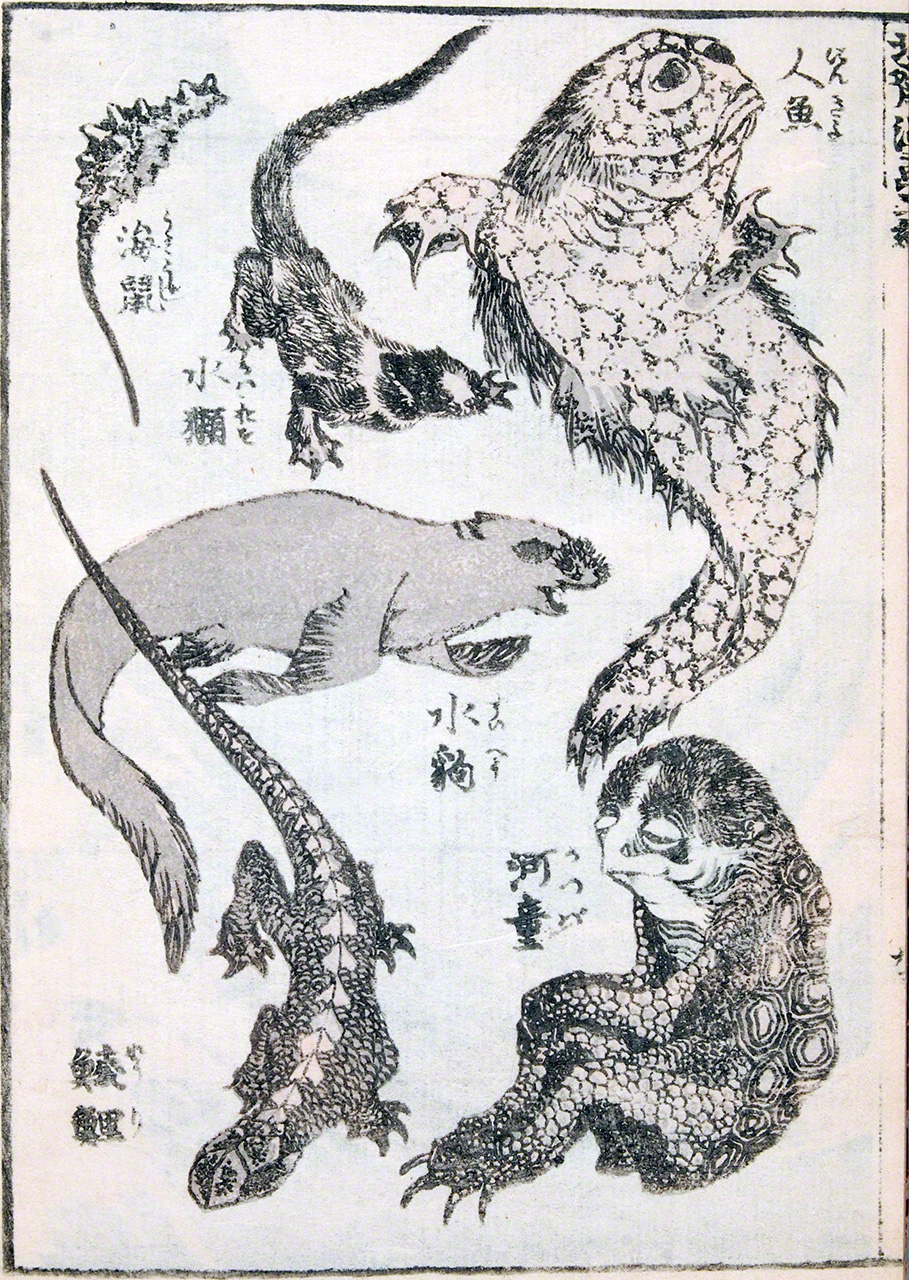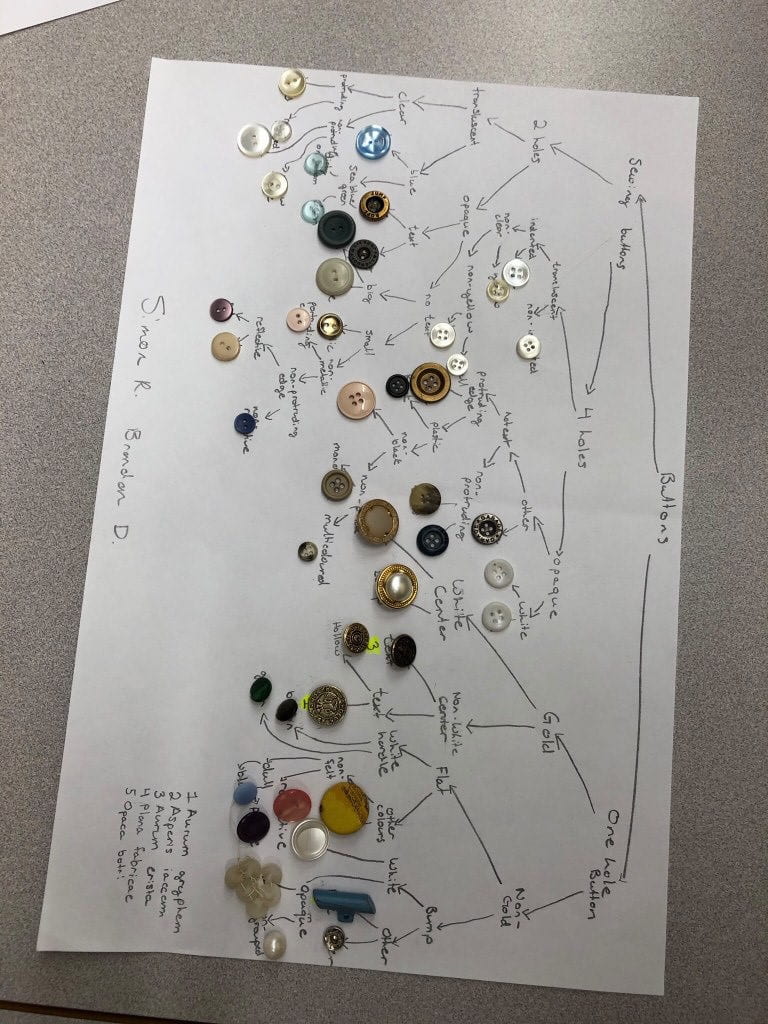I picked 河童 (Kappa – pronounced Ka-puh) because I liked him quite a lot in the game “Yo-kai Watch” and didn’t know he was an actual demon or ようかい。I also thought he was quite comical when Ms. Illing described him.


He seems to be most commonly known to have green hairless skin the size of a child. Circular, smooth dishes, with hair growing out of it, resembling a Lilypad. They have yellow, pointed beaks that resemble that of a chicken. Most depictions have 河童 with a turtle shell on its back, and its hands & feet webbed. They also seem to have grass tutus a lot of the time with a white belly. 河童 live in rivers and ponds, dragging swimmers to the bottom of the body of water, drowning them. Nowadays they are portrayed a lot friendlier and a lot more gentle. They only coalesced to form the name 河童 in the 19th & 20th century as they had many different names in different places.
In the Edo period (1603-1868) they were named:
- 河太郎 (かわたろう – Kawatarou) or 画太郎 (がたろ – Gataro) in the 髪型地域 (かみがたちいき – Kamigata Region) which is today known as 関西地域 (かんさいちいき – Kansai Region) around 去冬 (きょと – Kyoto) and 忍坂 (おさか – Osaka)
- 目処 (めどち – Medochi) in the 東北地方(とほくちいき – Tohoku Region) in North-Eastern Japan
- 水仕 (みずし – Mizushi) in the 北陸地方 (ほくりくちいき – Hokuriku Region) West of Tokyo
- えんこお (Enko) in the 中国地方 (ちゅごくちいき- Chugoku Region) and in the 四国地方 (しこく – Shikoku Region)
- ひょすべ (Hyosube) in the 九州地方 (きゅうしゅう – Kyushu Region)
And since 髪型地域 (Kamigata Region) was the cultural center for Japan, 河太郎 (Kawatarou) was the main usage for referring to a 河童. 河童 was used as a regional variation at the time.
河童 was originally thought of as a mammal like a small monkey or otter until near the start of the 1700s. 過学習 (かがくしゅう – Kagakushu), the fifteenth-century dictionary, describes that 河童 were called ( – kawaro) and that they were created from otters growing old. They were also referenced as monkeylike creatures that live in rivers by the Japanese-Portuguese Jesuit mercenaries in Nagasaki, 1603. After the 1700s time they were thought of reptilians and amphibians.
河童 with turtle shells became predominant due to Edo influence such as 浮世 (うきよ – ukiyo) prints, and by paintings on woodblocks. 葛飾北斎 (かつしかほくさい – Katsushika Hokusai) was one of Japan’s best artists and created a lot of famous Japanese art. He followed Edo conventions to paint 河童 , by painting them with pointed beaks, with shells of various kinds of turtles. Also with variations with coloring them green as some artists thought they looked like frogs due to their webbed feet & hands and had similarities to frogs.


I think that Japanese ようかい are a lot more seriously taken than Western demons. ようかい are meant to provide fear for children so that they do/don’t do certain things like I’ve heard of a ようかい that will try to eat you if you try to leave the house during the nighttime. While in the West we more likely have general names for “demons” that we should look out for like – ghost, demon, devil, zombie. They’re more words to be scared of than stories to be told. Also I believe that its not “Western” culture that has no stories of cultural creatures I think it is more North-Western or mainly countries Latin/Greek based countries due to the fact that we have been moved around and have not created tales of different beasts to conquer. I believe that ghosts or more likely lingering spirits exist but not all mythological creatures exist.
“‘Kappa’: The Terror of Japan’s Rivers.” Nippon.Com, 7 July 2022, https://www.nippon.com/en/japan-topics/b02505
“New Hokusai Museum Showcases Japan’s Most Celebrated Artist.” Nippon.Com, 8 Dec. 2016, https://www.nippon.com/en/views/b02316/new-hokusai-museum-showcases-japan’s-most-celebrated-artist.html




